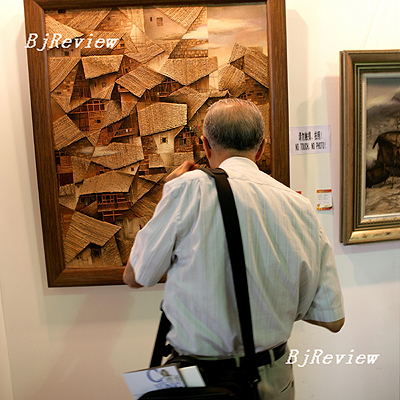
Mem Aziz is brimming with confidence about the future of his business in China. Director of Australia's Redrock Gallery, Aziz has been operating a branch of the gallery in Beijing for six months, achieving unexpected success.
"Without any advertisements, expositions or promotional activities, we have received excellent response," said Aziz. Redrock is one of the most reputable aboriginal fine art galleries in Australia.
Currently his gallery has a list of more than 20 clients in China, despite aboriginal art not being well-known in the country. The ambitious Australian has decided to move his gallery in Beijing to the city's booming central business district, which he says is the "right place for art."
Aziz is just one example of the new wave of gold diggers making moves into the flourishing Chinese art market. Although this market is less than 20 years old, it has surprised the art world with its rapid growth. From the burgeoning domestic art galleries and auction houses, to the auctions of Sotheby's in New York and Christie's in Hong Kong, Chinese art makes up over 70 percent of the total contemporary Asian artworks for sale.
"I would say that the future of Asia's art market is in China," said Hua Yuzhou, Art Director of the Shanghai-based HWAS Art Gallery.
The development of the art market has resulted in an investment fever in China, being linked to the increasing wealth of Chinese society. In recent years, collectors from the Chinese mainland have been frequently seen at international auctions.
"More and more Chinese investors bid in Christie's auctions in London, New York and Hong Kong," said Weng Xiaohui, board member of the Business Exploration Department of Christie's, the only overseas auction house that has been permitted by the Chinese Government to set up an office on the mainland. "In the salesroom in Hong Kong, 50 percent of the bidders are Chinese and nearly half of them come from the mainland," she added.
This conveys a signal of China's healthy economic development and the wealth of collectors, according to Weng. She estimates that in the coming three to five years, Chinese buyers' share of global art transaction volumes would double or even treble.
Art, it seems, is the next hot investment vehicle for the rich, following real estate and stocks.
"I would see the phenomenon as a sign of worry by the wealthy class. The business in the real estate market is not always profitable, the stock prices are fluctuating and they don't need extra Mercedes Benz cars, so they must invest their money in other things. At the moment, that other thing is art," explained Zhao Gang, a member of the board of a Beijing-based gallery.
The majority of Chinese mainland collectors are entrepreneurs aged between 30 and 70, who mainly come from the IT, real estate and financial sectors, Christie's' Weng revealed, pointing out that currently the aim of Chinese mainland collectors is only for investment, as they have entered the art market for only a short period.
Economic growth driving art market
Many factors have contributed to the booming art market, such as years of dynamic economic growth, the emergence of the affluent class, the increase of the living standard of the Chinese people and the importance the government has attached to the culture and art fields.
|